1 - Expected post-Chinafy results
Does Adobe Experience Manager work in China?
TLDR; Websites built with Adobe Experience Manage take 19.75 seconds to load in China. Adobe websites are also missing 36.1% resources when delivered in China versus the resources loaded from the U.S.
In this article, we’ll go into how Chinafy works with Adobe Experience Manager with context, commonly asked questions, and case studies. Jump to the end to see it in practice.
What is Adobe Experience Manager?
Adobe Experience Manager (AEM) is an enterprise content management solution used to build and manage high-performance websites, and mobile apps.
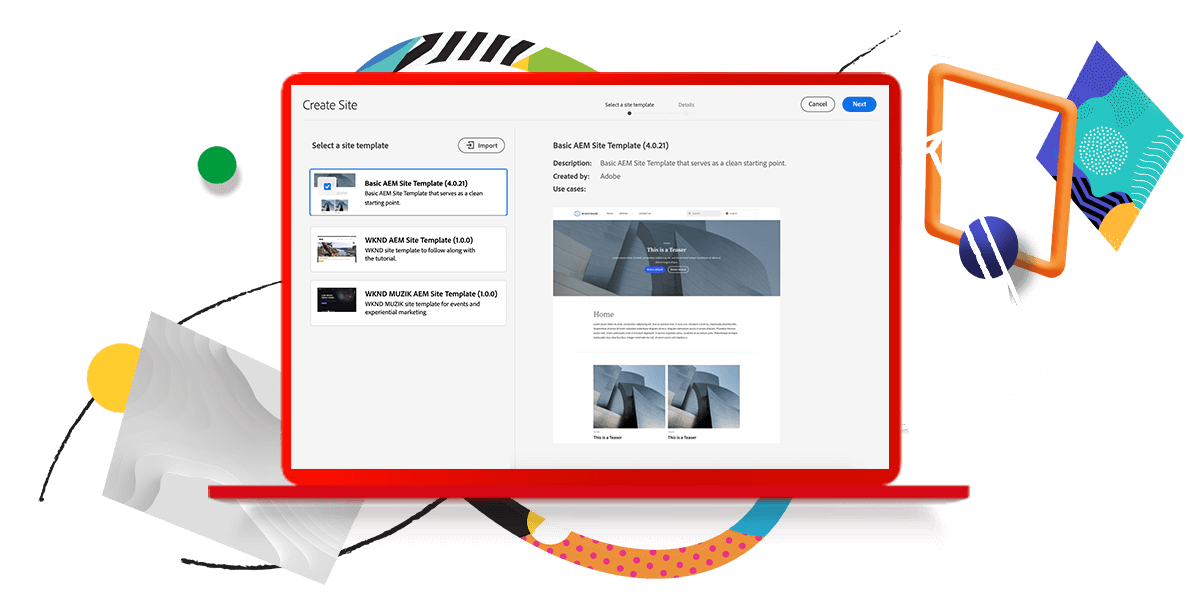
Adobe Experience Manager is, as the name suggests, a product by the technology giant Adobe. Under Adobe, marketers are also able to access a suite of integrated tools Adobe Analytics, Marketo, Adobe Commerce, and more.
According to WhatCMS, Adobe Experience Manager supports ~5% of the world's top 1000 most visited websites. These include the web properties of HP, Philips, and Nissan.
Adobe Experience Manager in China
Adobe Experience Manager is an incredibly powerful tool. However, that is not exactly well reflected in how their sites perform in China.
The average Adobe Experience Manager site takes 19.75 seconds to load in China^
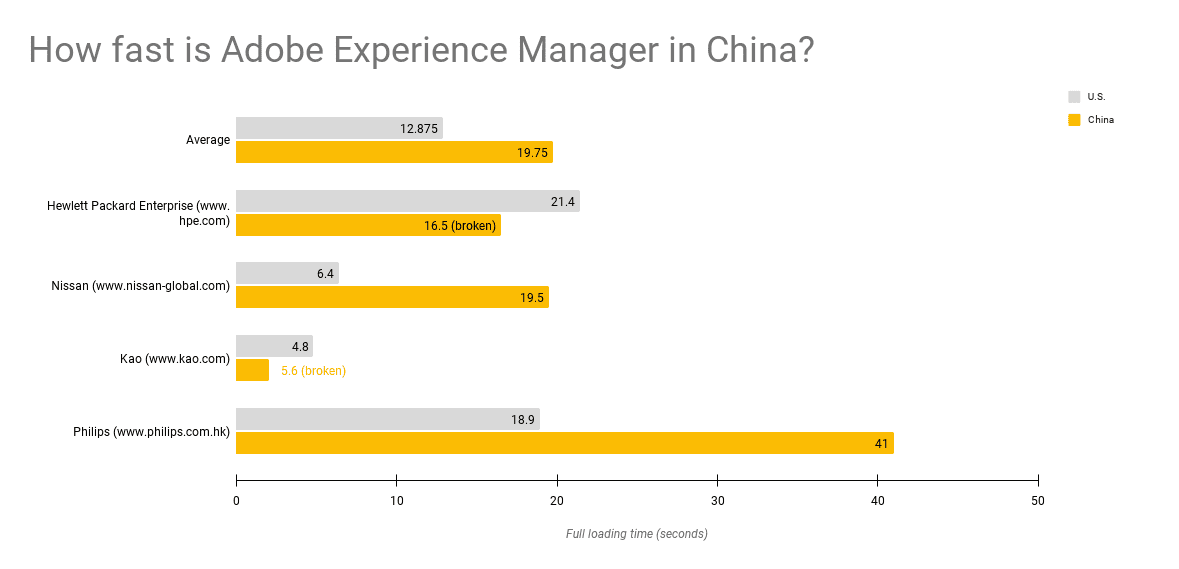
The average Adobe Experience Manager site only delivers 63.9% of web resources in China^

^Data points are taken from Chinafy Global Speed Test.
Why Adobe Experience Websites Don’t Work in China
Technical incompatibility issues impact all global websites, including AEM websites. These issues can be categorised into two categories of i) infrastructural incompatibility and ii) code-based incompatibility.
i) Infrastructural incompatibility: Hosting location and choice of CDN are common infrastructural variables that affect performance in China.
Adobe Experience Manager leverages Fastly as their built-in CDN.
Fastly performs strongly globally, but underperforms the average CDN in China (more below):
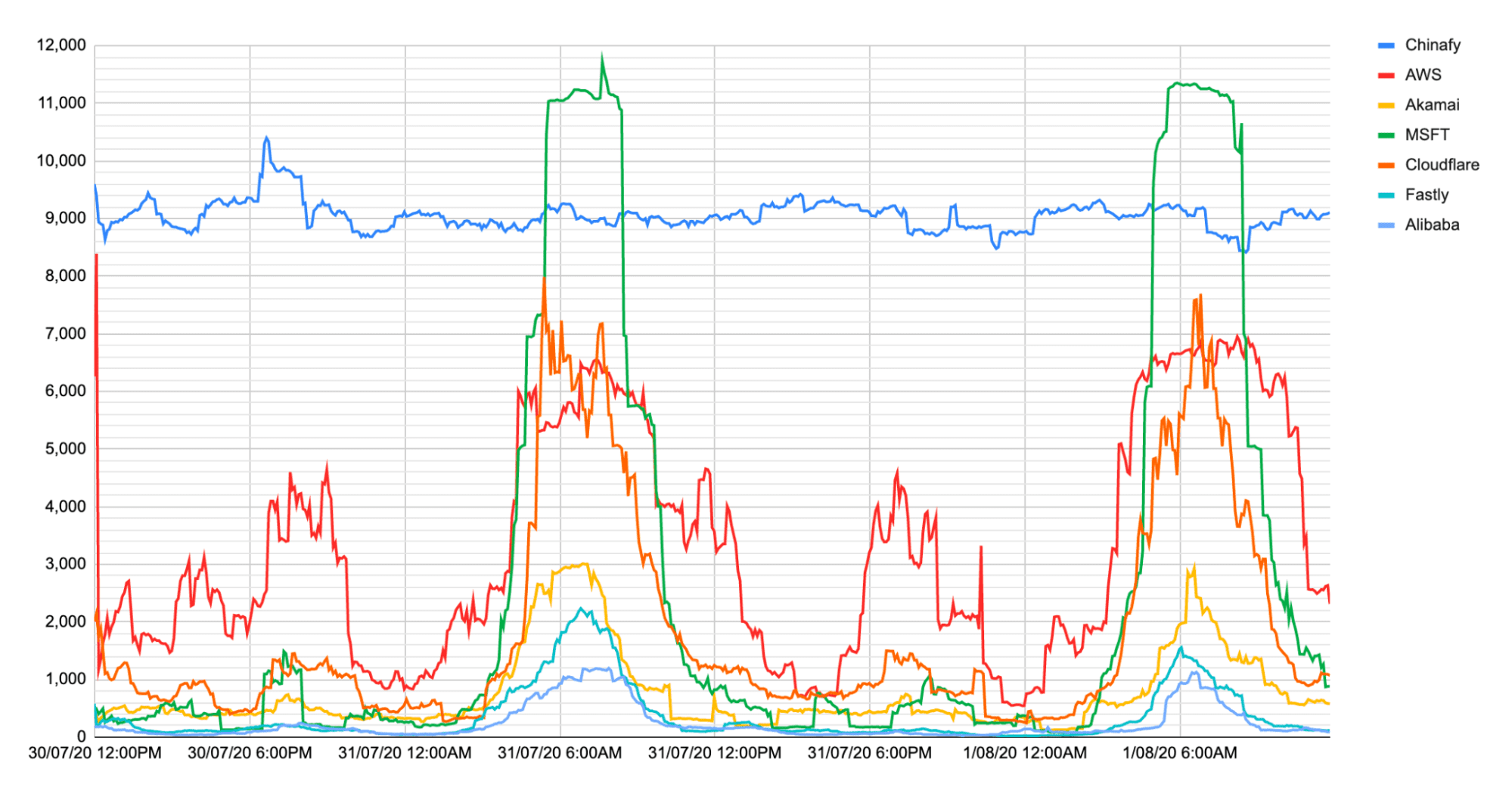
See how Fastly performs in China in teal (Source: Chinafy)
Companies tend to favor hosting their websites closer to where they are (and not necessarily their end users), which introduces lower throughput and high latency. This applies to Adobe Experience Manager users or otherwise. That said, the following challenge more often plays a larger role when it comes to website performance and deliverability in China.
ii) Code-based incompatibility: These is with reference to issues stemming from 3rd-party plugins, inaccessible resources & custom code that fails to load well from China…
Marketo forms, Google fonts, YouTube videos, and S3 files are just a few examples, out of thousands of examples, that encounter incompatibility issues in China.
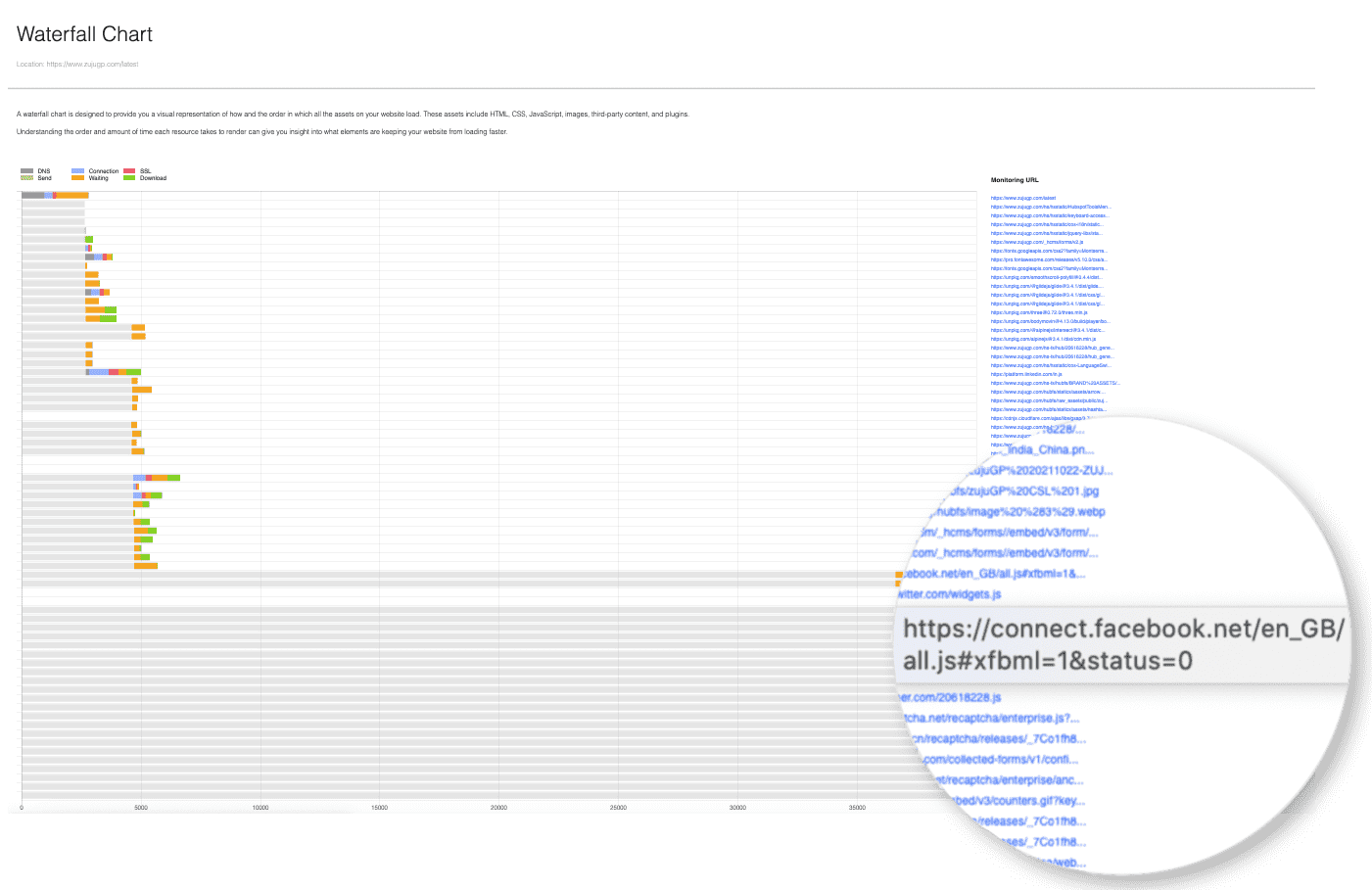
Above is an example of Facebook resources taking over 30 seconds to load from China. Note that Facebook is inaccessible, and thus, these resources often time out.
You could remove or replace these entirely, but not without researching, testing, deploying, and educating both content managers as well as developers on new and often evolving tools. Or, you could take one of several different approaches to address both infrastructure and incompatibility-based issues in parallel.
More about why websites don’t work in China
How to make Adobe Experience Manager Work in China
The three most-common approaches used to address AEM performance issues in China are…
Hosting Adobe Experience websites in China
Using an onshore China CDN, like Cloudflare China OR
Using Chinafy
We’ll go into more details below about their efficacy, process, and applicability below.
i) Host your Adobe Experience Manager site in China
When it comes to website localisation, the assumed expectation is that one would i) translate it, ii) rehost it, and iii) the website would just work.
Unfortunately, as many people know from experience, that can’t be assumed in China.
Hosting a website that works in China is easily a 3 to 12-month process that requires multiple, full-time experts and a budget that takes into account -
Timeline: This onshore route tends to take an average of 3 to 4 months of website development and another 6 to 8 months more to apply to become a licensed web content provider, which is a pre-requisite to hosting in China.
Expertise: Common web resources (e.g. YouTube) are slow, if not entirely inaccessible, in China. This approach would require an experienced, dedicated headcount in order to manage a list of these resources to exclude or replace on your localised site to achieve and then maintain performance in China. This applies to websites hosted onshore or otherwise.
Costs: A fully onshore website costs between $42K to $100K from the start. If you’re looking to maintain the website, it’s also a common practice to budget for hiring an agency or adding an in-house headcount.
ii) Use a China CDN
China CDNs can definitely deliver some forms of acceleration on the infrastructure-level, but are unable to fully address performance issues in China. China CDNs - like all CDNs - don’t resolve or optimize any third-party, code-based incompatibility issues. So things that work, will work a bit faster. Resources that don’t work, will still remain dysfunctional and without proper handling.
All in all, this is to say that using a China CDN can make a website faster in China, but it does not deliver the full experience that you may have designed in the first place. Not to mention, use of a China CDN would also still require an ICP license and onshore business entity.
iii) Chinafy
The third option is to use Chinafy to generate a China-friendly version of your current site, without adding a single line of code.
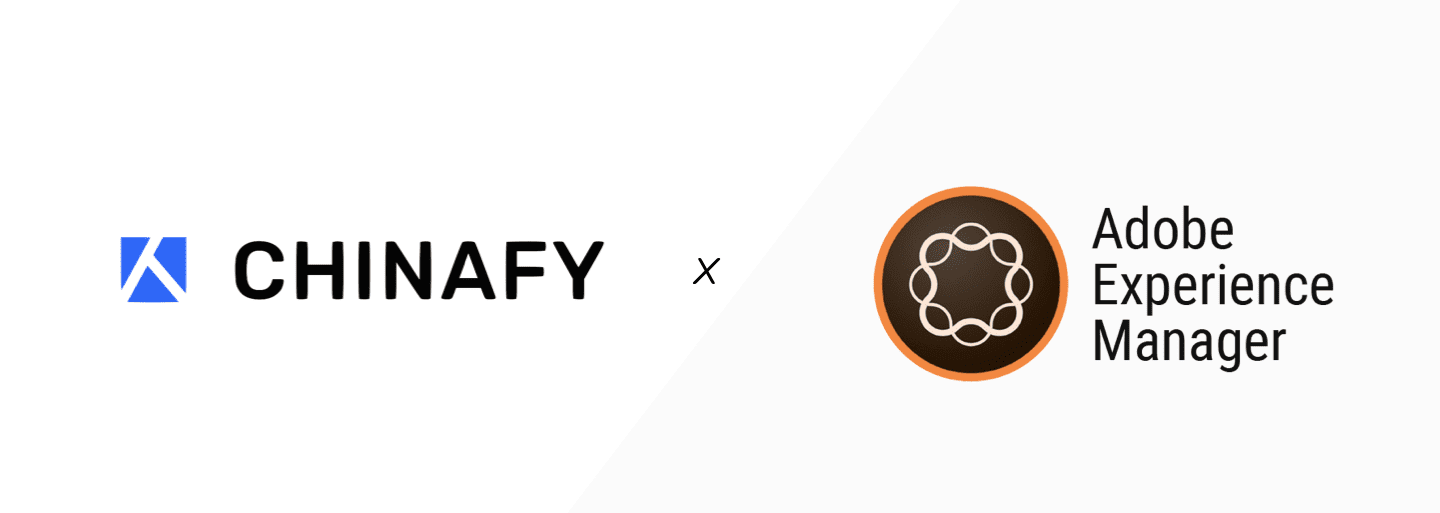
Chinafy optimizes Adobe Experience manager websites to achieve virtually onshore performance with a full offshore set-up. Chinafy identifies and resolves over thousands of code-based incompatibilities to date, and then bolts a fully-managed CDN onto the website for additional acceleration.
The end result? A much faster, optimised, fully-managed version of the global site in China, ready to deploy in ~2 weeks.
Chinafy enables almost any existing website
to load fast and fully in China.

For more specific case studies, please visit Chinafy Case Studies.
How Chinafy Works with Adobe Experience Manager
Mandai Wildlife Reserves uses Chinafy to optimise its Adobe Experience Manager website to load 3-4x faster in China.

The original Adobe Experience Manager website took up to 40 seconds to load in China, and after Chinafy, just <10 seconds

Want to make your Adobe Experience Manager website work in China?
Contact Chinafy to learn more!



1 - Expected post-Chinafy results






























